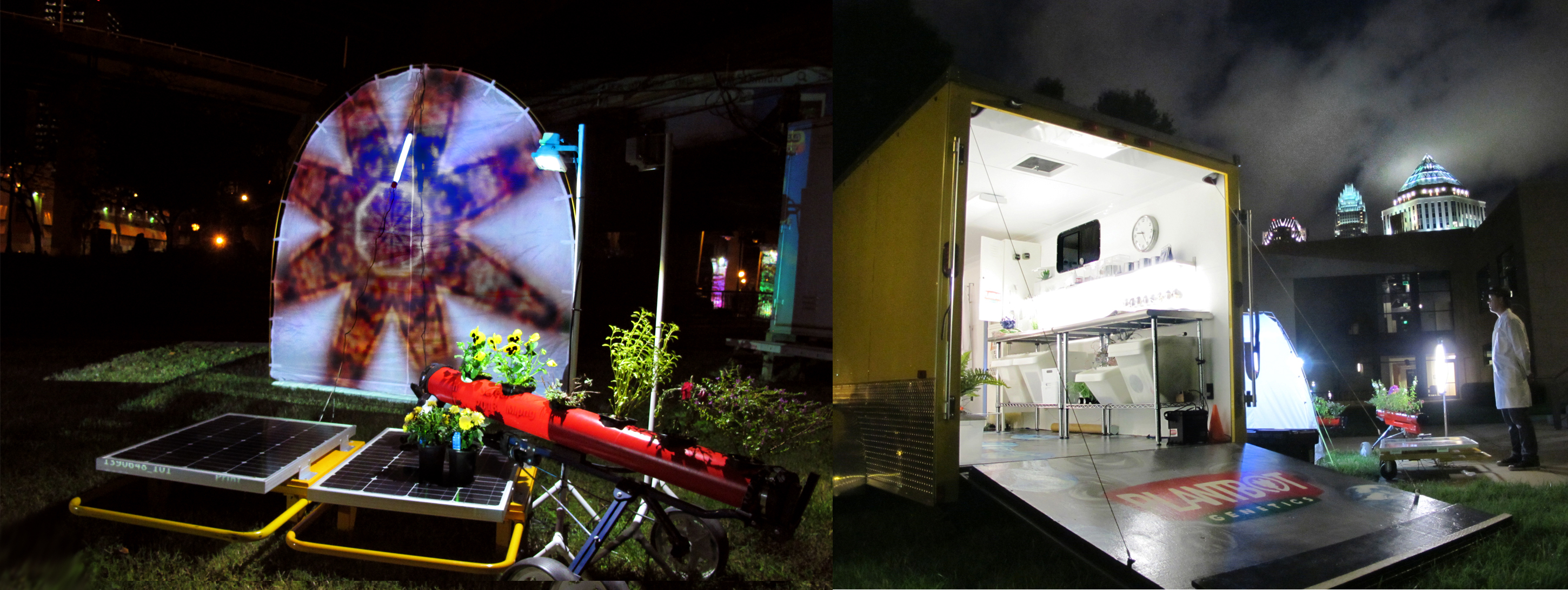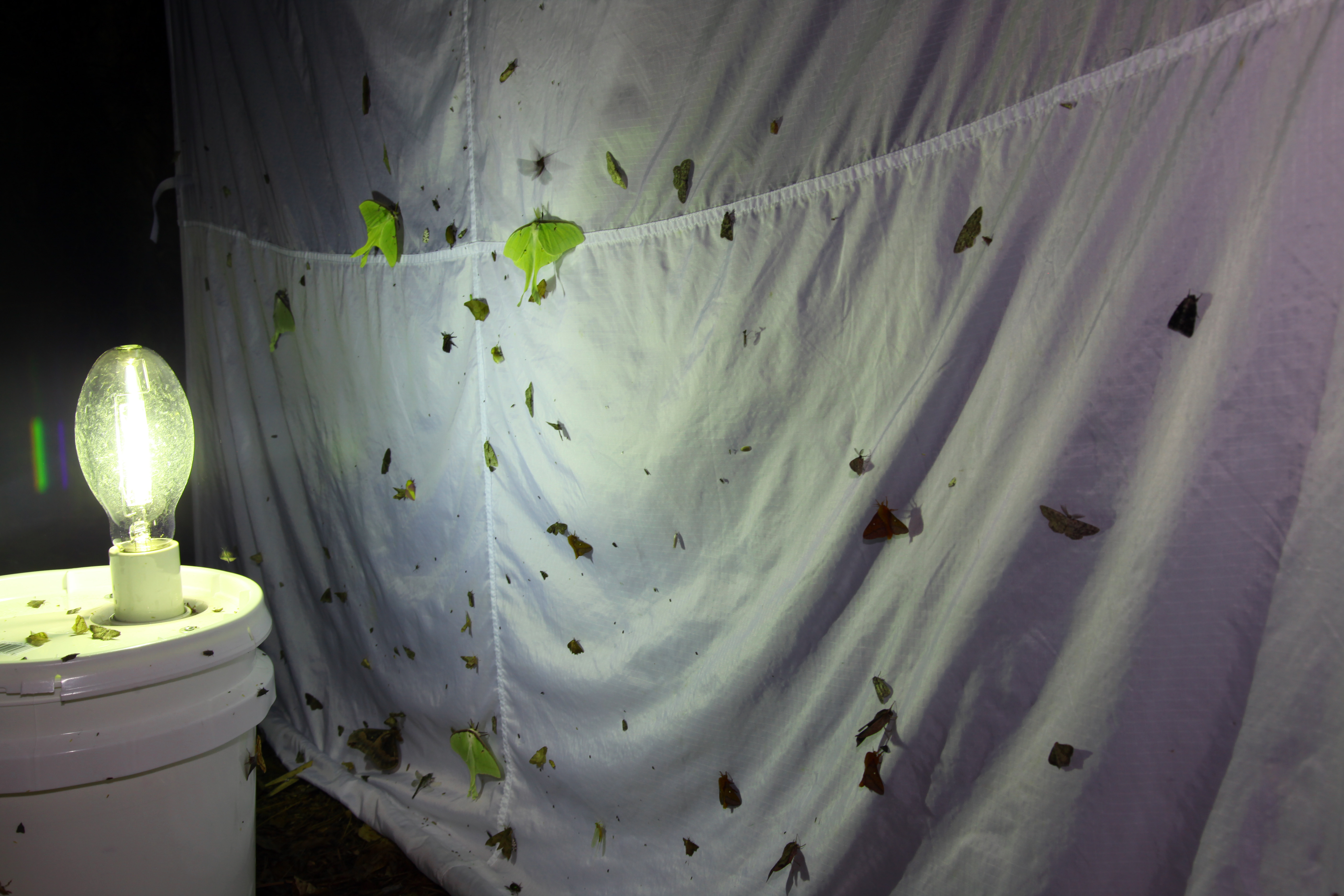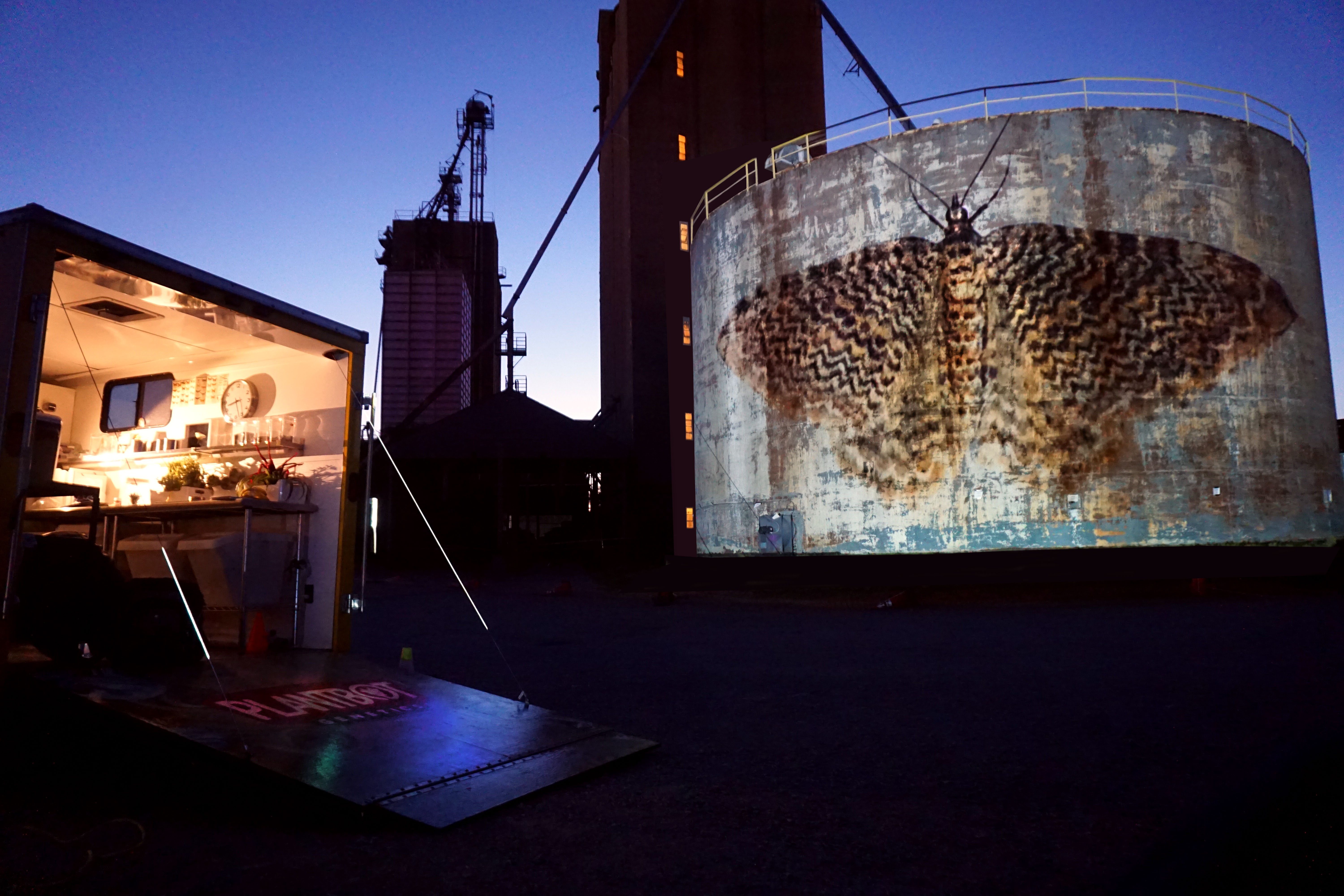Below is a guest post by Wendy DesChene and Jeff Schmuki, who hosted their event titled the Moth Project, during National Moth Week in 2016. Below, they describe their project and event, which consisted of projecting photos of moths and kaleidoscopic designs to attract moths!
Working under the guise of PlantBot Genetics, artists Wendy DesChene and Jeff Schmuki collaborate with various partners to empower audiences through art and citizen science, promoting environmental literacy and backyard naturalism. This past National Moth Week, they partnered with Entomica, an insectarium based in Sault Ste. Marie, Ontario Canada to host a one-night Moth Project right on the banks of the St. Mary’s River. This public event attracted hordes of newly hatched caddis flies, 30 participants, and a small collection of moths, some of which were easily identifiable.

During the Moth Project, kaleidoscopic videos of moths and their wing patterns are projected onto reflective tents and even buildings to attract both moths and curious people. Often an accompanying 18′ solar powered trailer or “ArtLab” acts as the stage for these public engagements providing hands-on activities and information on a broad range of environmental topics. Longer programs feature field guides identifying the moths and useful information on how we can support their numbers whether it be planting pollinator friendly plants or refraining from spraying pesticides on a windy day. Audiences are often surprised how easy it is to survey moths in their backyard using various UV emitting lights, a white sheet, and field guide.
 Both art and science have the potential to alter perception, foster dialogue, and inspire social change. Each Moth Project is directly linked to the community with moth surveys allowing any participant to become co-investigator and author of localized data. Moths play a vital role in telling us more about the health of our environment. They are widespread, found in diverse habitats, and monitoring their numbers and ranges can give insight into the effects of farming practices, pesticides, air pollution and climate change. Immediate outcomes of these programs allow communities to learn and identify a few local moths which connect people to their own yard and builds a stronger connection between them and nature.
Both art and science have the potential to alter perception, foster dialogue, and inspire social change. Each Moth Project is directly linked to the community with moth surveys allowing any participant to become co-investigator and author of localized data. Moths play a vital role in telling us more about the health of our environment. They are widespread, found in diverse habitats, and monitoring their numbers and ranges can give insight into the effects of farming practices, pesticides, air pollution and climate change. Immediate outcomes of these programs allow communities to learn and identify a few local moths which connect people to their own yard and builds a stronger connection between them and nature.

Events such as National Moth Week not only provides an opportunity to share the incredible diversity of moths but the decline of the pollinator populations and the need to preserve the environment while short-circuiting doomsday predictions. Wendy and Jeff gently share simple steps that any individual can take to nurture local pollinators — an activity that empowers the community long after the event and artists and collaborators have moved on.